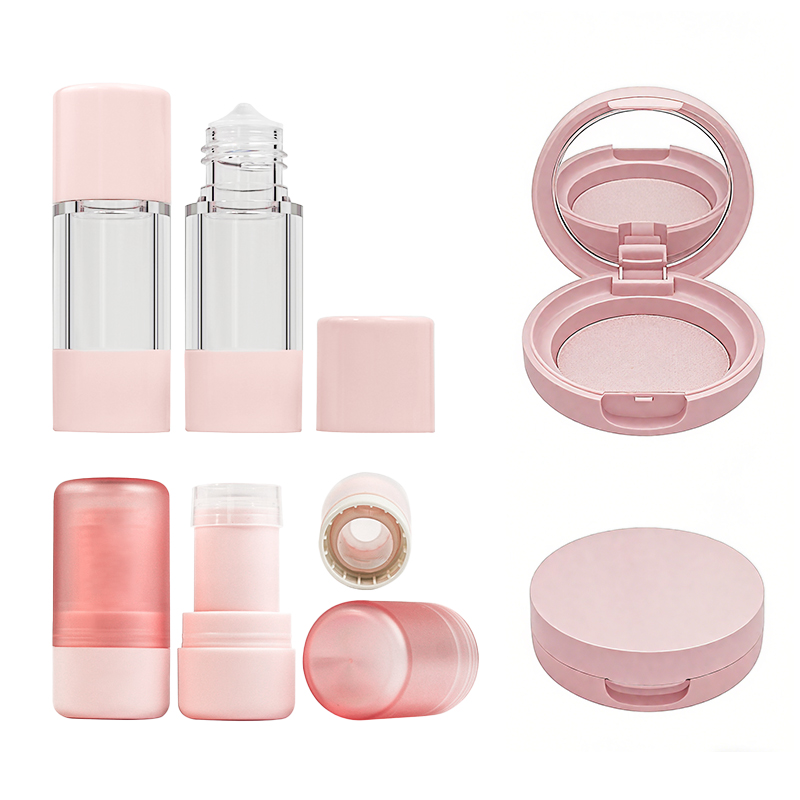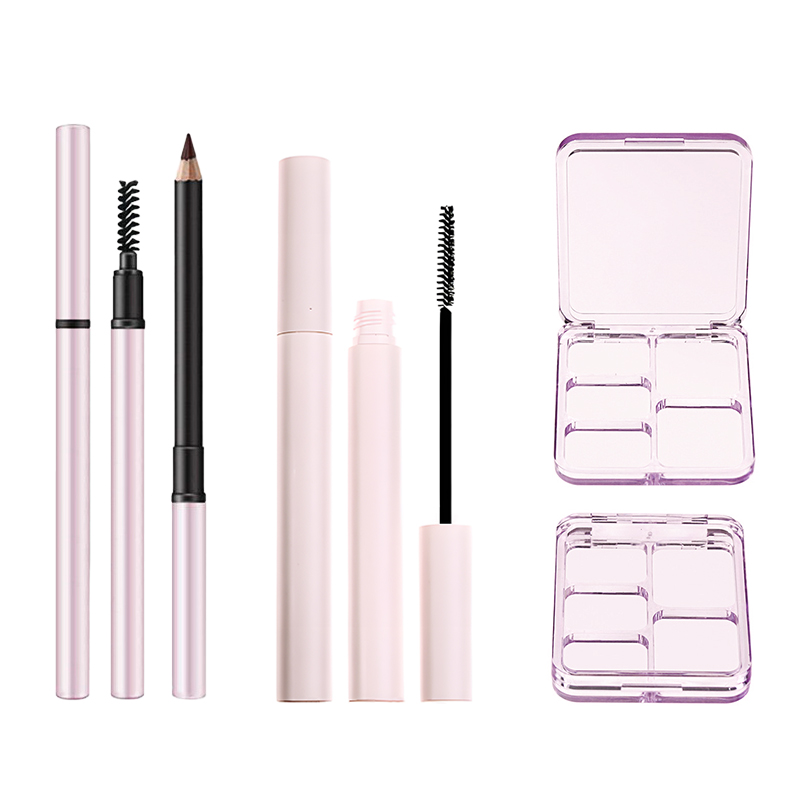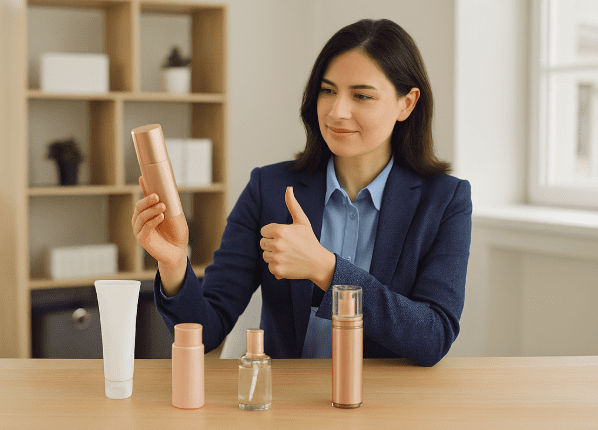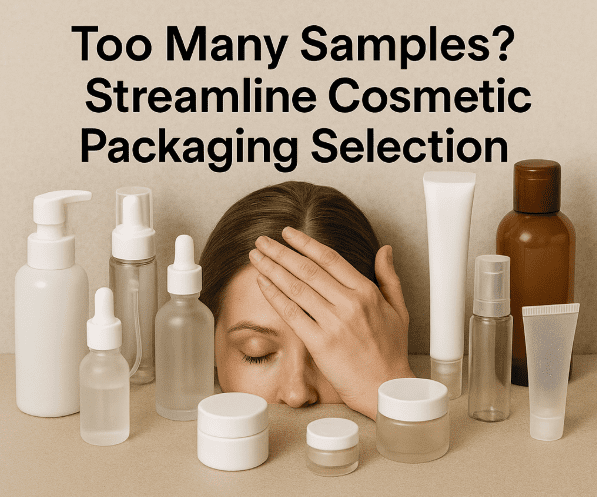Simple Tips to Evaluate Cosmetic Packaging Manufacturers
Finding reliable cosmetic packaging manufacturers can feel like dating—everyone looks great at first, but not all deliver when it counts. If you’re sourcing makeup packaging in bulk, chances are you’ve run into the same headaches: poor quality, slow replies, sketchy shipping, or worse—damaged goods showing up right before a product launch.
You’ve got enough on your plate. Picking packaging shouldn’t feel like solving a puzzle with missing pieces. From endless samples to confusing material choices, it’s easy to lose time and money chasing the wrong partner.
3 Steps To Audit Your Cosmetic Packaging Manufacturers
Assess Quality Control And FDA Regulations
Start your vetting by shining a spotlight on how your supplier handles compliance and safety. You don’t want surprises when you’re knee-deep in production.
✔️ Regulatory Audits Make sure the factory welcomes regular GMP-standard audits—e.g., the cosmetics guideline ISO 22716—to verify production, control, storage, and shipment practices align with industry norms.
✔️ Material Traceability If your makeup jars contain unknown plastic blends, you’re in trouble. Every ingredient, every material batch, should be traceable from source to shelf. (Markings like Resin Identification Codes help identify plastic resins but are not recyclability guarantees.)
✔️ Defect Rates & Documentation Ask to see defect rate logs and clear QA documentation—consistent tracking demonstrates process control under a recognized ISO 9001 quality management system.
✔️ FDA Compliance Since the MoCRA law expanded FDA oversight, confirm the supplier understands U.S. obligations (facility registration, product listing, recordkeeping) and aligns their GMP with FDA’s draft cosmetic GMP guidance.
Bonus: If you also sell in the EU, ask about chemical compliance under REACH. (European Chemicals Agency)
Evaluate Molding Machines And Conveyor Systems
If your supplier’s machines are outdated, your product’s quality and lead time are on the line. Let’s break this down like a factory boss would.
-
Start with Injection Molding and Blow Molding Machines. Ask what year they were made and how often they’re calibrated. Efficient molds = less material waste and tighter tolerances.
-
Inspect Automation Technology. Conveyor systems should sync with labeling and capping machines to minimize manual intervention.
-
Dig into Tooling Maintenance. Maintenance logs showing downtime and output rates are green flags.
-
Think big: confirm Production Capacity matches your forecast.
If you’re evaluating mascara packaging, compare real options and finishes with Topfeel’s mascara tubes collection for a benchmark you can hold in your hand.
Review Assembly And Finishing Processes
This is where the magic—and often the mess—happens. If the assembly line isn’t tight, you’ll feel it in returns and customer reviews.
-
Final Assembly Lines: Ask if they use semi-automated or fully automated setups for consistency.
-
Surface Finishing: Whether it’s a glossy compact case or a matte lipstick tube, coating should be even.
-
Labeling Accuracy: Misaligned labels hurt shelf presence; request machine tolerance details.
-
Decoration Methods: Confirm heat stamping, silk-screening, and hot foil are in-house (saves time and risk).
-
Sterilization Protocols: Especially for skincare or dropper/pump systems, ask for post-assembly hygiene steps.
Explore Topfeel’s in-house finishing capabilities and case studies in custom cosmetic packaging for ideas you can require in your RFQ.
Too Many Samples? Streamline Cosmetic Packaging Selection
Prioritize By Functionality For Skincare And Makeup
Drowning in packaging samples? Here’s how to cut through the clutter by focusing on functionality for your core product categories.
Step 1: Start with application method. Does your makeup line need droppers or airless pumps? For skincare, jars with protective inner lids may make more sense. Step 2: Match packaging to dispensing accuracy and product protection. Step 3: Check how each option handles shelf life and barrier function (e.g., amber glass for light-sensitive formulas).
• Focus on what the product needs, not just what looks cool. • Eliminate anything that doesn’t suit your category usage.
Browse practical examples across Packaging for Cosmetics or dive deeper into Sustainable Cosmetic Packaging considerations.
Rank Bottles Jars And Tubes By Ergonomics
All containers are not created equal—let’s talk grip, feel, and ease.
📊 Ergonomic Rating Table for Common Cosmetic Containers
| Container Type | Ergonomic Grip | Portability | Ease of Dispensing |
|---|---|---|---|
| Bottles | ★★★☆☆ | ★★★★☆ | ★★★★☆ |
| Jars | ★★☆☆☆ | ★★☆☆☆ | ★★★☆☆ |
| Tubes | ★★★★☆ | ★★★★★ | ★★★★★ |
Key Factors to Watch:
-
Ergonomic Grip: Bottles with indentations or matte surfaces are easier to hold.
-
Tube Flexibility: Squeezable tubes reduce hand strain—compare with Topfeel’s lip gloss tube families to see form-factor differences.
-
Jar Accessibility: Wide-mouthed jars with textured lids.
-
User Comfort: For precise control in makeup applications, applicator design matters—see empty palette options for compact ergonomics.
Shortlist packaging types that enhance ease of use—because if your customers struggle with it, they won’t repurchase.
Filter By Sustainability Certifications And Recyclability
Going green isn’t just trendy—it’s expected. But how do you sift through the sustainable noise?
Start with certifications—suppliers aligned to REACH and credible recyclability design guidance (e.g., the APR Design Guide) are ahead. Look for options made with recyclable materials or PCR content. Also note: RIC symbols identify resin type, not recyclability—validate actual end-of-life with APR guidance. (European Chemicals Agency)
Many brands also follow the Ellen MacArthur Foundation’s Global Commitment targets to increase post-consumer recycled (PCR) content and design for circularity. (Ellen MacArthur Foundation)
Choose options that help your brand stay credible—and compliant.
Comparing Plastic Vs. Glass Materials
A quick hit for wholesale buyers: here’s how plastic and glass compare when it comes to makeup packaging.
Plastic Packaging Options
PET, PP, HDPE—three acronyms you’ll want to remember. Plastic packaging gives brands flexibility without breaking the bank.
-
Versatility rules: Plastic fits almost every cosmetic format—from jars to sprayers.
-
Durability wins: HDPE won’t shatter like glass, easing shipping worries.
-
Lightweight advantage: Bulk orders cost less to ship.
-
Recyclable & cost-effective: Verify whether your design is compatible with recycling streams via the APR Design Guide and note RIC is an identifier, not a recyclability claim (ASTM D7611).
When budgets are tight and volume is high, plastic’s a no-brainer.
Glass Packaging Benefits
Sometimes you want more than “practical”—you want “premium.” Glass offers a few things plastic just can’t.
Premium Feel
There’s a reason luxury makeup brands opt for thick-walled glass jars: they feel expensive and photograph even better.
Chemical Inertness
Unlike plastic, glass won’t react with sensitive ingredients in serums, oils, or fragrance products.
UV Protection
Opaque or amber glass adds a natural layer of UV defense—especially important for light-sensitive actives.
Sustainability Bonus
Glass is endlessly recyclable and often favored by eco-conscious consumers looking for sustainable packaging.
For lip color formats, compare aesthetics and components with Topfeel’s transparent liquid lipstick bottle or clear lip gloss packaging PETG wand to decide where glass vs. plastic best fits your brand tier.
Will Your Cosmetic Packaging Withstand Transportation?
Let’s be real—if your packaging doesn’t survive shipping, your profits won’t either. Here’s how to make sure your bottles, droppers, and jars make it to the shelves intact.
Test Drop Resistance Of Droppers And Pumps
Droppers and pumps are fragile little beasts. A cracked pipette or busted pump head in transit? Total nightmare. Time to test like a pro.
Durability dimensions worth checking:
-
Drop Resistance: Use distribution simulation methods like ASTM D4169 for drops, vibration, compression, and impacts.
-
Pump Strength: Assess repeated-impact tolerance.
-
Packaging Integrity: Reinforce necks/closures with targeted cushioning.
-
Breakage Prevention: Molded pulp trays or dividers reduce casualties.
Inspect Seal Integrity With Capping Machines
Leaks ruin reputations. Before you sign off on a packaging run, make sure your caps are locked down tight.
Here’s what you absolutely must inspect:
-
Torque Testing – Validate application/removal torque against methods referenced in ASTM D3474 and related closure standards. Consistency protects product integrity and consumer safety.
-
Tamper Evidence – Check if seals leave visible proof of interference. Essential for makeup and skincare.
-
Closure Quality – Misaligned threading and low-grade capping machines can mess up hundreds of units in a shift.
-
Product Security – A leak test on your finished units under simulated pressure is non-negotiable.
Bonus tip? Ask your supplier if they use automated inline capping machines—they offer more consistency than manual setups.
Simulate Conveyor System Handling
From factory to freight to fulfillment, your product gets knocked around more than you’d think. Simulating this chaos helps spot weak packaging before it’s too late.
Start with a conveyor simulation setup to mimic motion and tilt angles your packages will experience in real-life handling. Then, consider these pressure points:
- Abrasion Resistance: Labels rubbing off on high-speed belts? Not a good look.
-
Vibration Analysis: Extended shipping causes micro-vibrations that loosen caps or scuff jars.
- Packaging Wear: Repeated surface contact can expose poor material finishes.
- Shipping Stress: Add sudden jolts, tilts, and stop/start movement to identify weak structural spots in compacts or droppers.
Use parcel-shipping tests (e.g., ISTA 3A) to stress labels, closures, and finishes under realistic vibration, shock, and abrasion.
Conclusion
If you’ve ever felt like picking a supplier was like finding a needle in a haystack, you’re not alone. Navigating the world of cosmetic packaging can feel like speed dating—you meet dozens of options, but few are a real match. With a solid evaluation game plan, you can stop second-guessing and start choosing with confidence.
“Quality means doing it right when no one is looking,” said Henry Ford—and that couldn’t ring truer when it comes to cosmetic packaging manufacturers. Trust the ones who obsess over clean lines, tight seals, and standards like FDA MoCRA and ISO 22716, not just pretty samples. (U.S. Food and Drug Administration)
Cut through the noise. Don’t wait for a packaging disaster to fix your process. A smart decision today keeps your products looking sharp and your supply chain headache-free tomorrow.
FAQs
What Should I Look for When Auditing Cosmetic Packaging Manufacturers?
-
Certifications like GMP (ISO 22716) or ISO 9001 show they’ve got real systems in place.
-
Check if their molding machines and assembly lines are modern and well-maintained.
-
Walk through quality control steps—ensure inspections aren’t just talk.
How Can I Tell If a Cosmetic Packaging Manufacturer Can Handle Large Orders?
-
Ask what kind of conveyor systems and molding machines they use—automation matters.
-
Have them walk you through a past high-volume project.
-
Check how fast their filling and capping machines can run under pressure (and how they verify torque).
What Kind of Packaging Is Best for Skincare?
Skincare needs packaging that protects formulas but also looks clean and easy to use. For creams or serums, airless pumps, tubes, or jars are common picks. Explore Topfeel’s curated face makeup packaging to see form factors you can adapt for skincare, too.
What If My Cosmetic Packaging Supplier Doesn’t Use Updated Machinery? It’s a red flag. Outdated tools lead to slowdowns, sloppy prints, and even leaky seals. Look out for:
-
Old labeling or decorating machines
-
Manual processes that should be automated
-
Inconsistent finishing—some batches looking dull, others glossy
Why Is It So Hard to Choose Between So Many Packaging Samples? Because it’s not just about looks—it’s about fit. Narrow down by how the packaging functions for skincare or makeup, then check if it matches your brand’s feel. A few strong options beat a dozen “maybes.” Compare across lip gloss tubes and mascara tubes to align components with your hero SKUs.
References
-
ISO — ISO 22716:2007 – Good Manufacturing Practices (GMP) — https://www.iso.org/standard/36437.html
-
FDA — Modernization of Cosmetics Regulation Act of 2022 (MoCRA) — https://www.fda.gov/cosmetics/cosmetics-laws-regulations/modernization-cosmetics-regulation-act-2022-mocra
-
FDA — Registration & Listing of Cosmetic Product Facilities and Products — https://www.fda.gov/cosmetics/registration-listing-cosmetic-product-facilities-and-products
- FDA — Draft Guidance for Industry: Cosmetic Good Manufacturing Practices — https://www.fda.gov/regulatory-information/search-fda-guidance-documents/draft-guidance-industry-cosmetic-good-manufacturing-practices
- ECHA — Understanding REACH — https://echa.europa.eu/regulations/reach/understanding-reach
-
European Commission — REACH Regulation — https://environment.ec.europa.eu/topics/chemicals/reach-regulation_en
-
ISO — ISO 9001:2015 – Quality management systems — https://www.iso.org/standard/62085.html
-
Westpak — ASTM D4169 Overview — https://westpak.com/test-standards/astm-d4169/
-
ISTA — Test Procedures (Procedure 3A) — https://ista.org/test_procedures.php
-
MesaLabs — Cap Torque Testing: Standards and Regulations — https://mesalabs.com/torque-news/cap-torque-testing-standards-and-regulations
-
Association of Plastic Recyclers — APR Design Guide Overview — https://plasticsrecycling.org/apr-design-hub/apr-design-guide-overview/
-
Ellen MacArthur Foundation — Global Commitment 2023 Overview — https://www.ellenmacarthurfoundation.org/global-commitment-2023/overview
-
ASTM — D7611/D7611M – Resin Identification Codes — https://www.astm.org/d7611_d7611m-21.html










